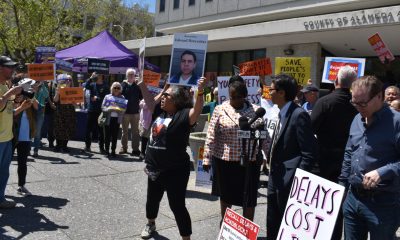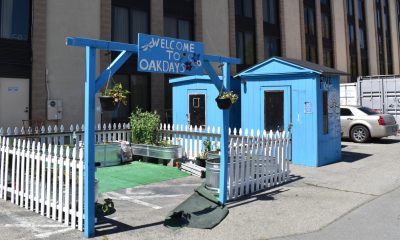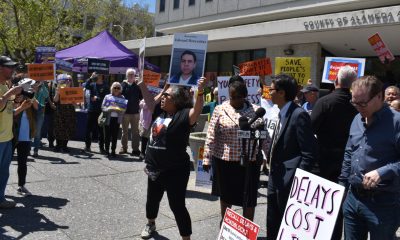Bay Area
New Weather Radar for Public Safety Response Part of Bay Area radar system, led by Sonoma, to be installed on Mount Barnabe
Extreme weather systems, such as atmospheric rivers, have hit California with increasing frequency in recent years. The average damage from floods caused by atmospheric rivers in California is now over $1 billion per year. Marin County has experienced its share of these intense storms and the damages are both costly and disruptive.
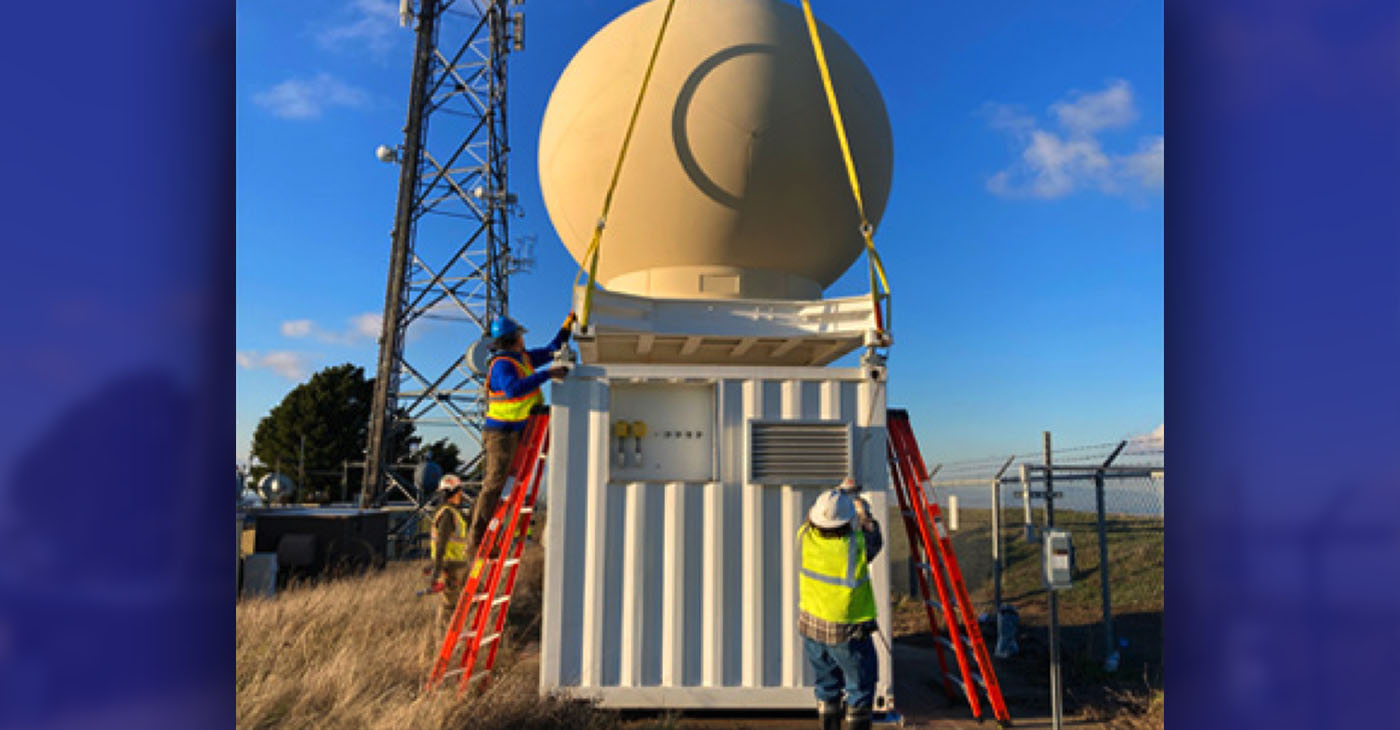
San Rafael, CA – Extreme weather systems, such as atmospheric rivers, have hit California with increasing frequency in recent years. The average damage from floods caused by atmospheric rivers in California is now over $1 billion per year. Marin County has experienced its share of these intense storms and the damages are both costly and disruptive. In times of emergency, accurate and timely forecasts are critical for cost-effective risk-based decisions regarding public safety response measures, infrastructure operations, and essential resource allocation.
The Marin County Department of Public Works (DPW) is collaborating with local, state and federal agencies, with Sonoma County Water Agency (SCWA) as the project manager, on weather radar installations at key locations across the greater San Francisco Bay Area. The result will be a regional weather prediction system that uses enhanced weather radar to track atmospheric rivers.
As part of a larger project managed by Sonoma County Water Agency, a new weather radar installation is expected to be installed on Mount Barnabe in West Marin, which will vastly improve emergency response and public safety measures for the entire Bay Area during atmospheric river events. The installation on Mount Barnabe would be similar to the one that was recently installed on Rocky Ridge in the East Bay (shown).
This public safety and emergency response improvement project is funded by grants from the California Department of Water Resources (DWR), California Office of Emergency Services (CalOES) and Federal Emergency Management Agency (FEMA).
The system, known as the Advanced Quantitative Precipitation Information (AQPI) project, includes two types of radar, X-band and C-band, which are being installed across various counties in the Bay Area. Five X-band radar installations will be placed in counties outside of Marin and a single C-band radar installation will be placed on top of County-owned Mount Barnabe in West Marin. The Mount Barnabe location currently has a MERA radio installation and a Marin County Fire Department lookout tower in proximity to the planned C-band radar installation, so electricity and internet connections are already in place.
An online community meeting was held February 15 to discuss the details of the project and answer questions for residents living in the vicinity of Mount Barnabe. The Marin County Board of Supervisors will consider SCWA’s proposed lease agreement for the Mount Barnabe site at the March 7 public meeting.
The C-band radar will be mounted about 10 feet above the ground on top of a 24-by-16-foot concrete pad. The 10-foot diameter golf ball shaped “radome” encloses and protects the radar antenna from the elements. To minimize visibility, the structure will be painted beige to better compliment the surrounding environment and blend in with the color tones of the hillside.
The C-band radar system uses a directional antenna to focus the beam in a specific direction, like how a lighthouse creates a narrow beam of light, and then scans vertically and horizontally to produce an image of the atmosphere. The radar will not exceed Federal Communications Commission (FCC) recommended radar levels for general population and is below all applicable regulatory standards. Also, because the radar will be placed 10 feet above the ground, the radar beam will be higher than the tallest person in the area.
Having a C-band radar on Mount Barnabe provides a clear view of the Pacific Ocean, which is where atmospheric rivers start. As storms hit land and move toward the Bay Area, the radar will track precipitation as it falls. The location on top of the mountain will also give great coverage of the populated areas of Marin. In Sonoma, Contra Costa, and San Mateo counties, the coverage of the new C-band radar installation will overlap with that of the X-band radars, giving all counties good coverage.
Both SCWA and the County of Marin have found the project to be exempt from the California Environmental Quality Act (CEQA) requirements for additional environmental review. The determination was made because the project is proposed on a previously developed area with similar government facility land uses, and the resulting radar installation would not impact the quality of the location, nor result in any cumulative adverse effects upon the surrounding environment.
Permitting is anticipated to be finalized by SCWA by mid-2023, with radar installation occurring in the second half of 2023. The timeline for the $2 million effort on Mount Barnabe is driven by the requirement that grant funding be used by the end of 2023. The operation of the radar system will be transferred to the Center for Western Weather and Water Extremes, which is part of the Scripps Institute of Oceanography at UC San Diego.
Activism
S.F. Black Leaders Rally to Protest, Discuss ‘Epidemic’ of Racial Slurs Against Black Students in SF Public School System
Parents at the meeting spoke of their children as no longer feeling safe in school because of bullying and discrimination. Parents also said that reported incidents such as racial slurs and intimidation are not dealt with to their satisfaction and feel ignored.

By Carla Thomas
San Francisco’s Third Baptist Church hosted a rally and meeting Sunday to discuss hatred toward African American students of the San Francisco Unified School District (SFUSD).
Rev. Amos C. Brown, president of the San Francisco NAACP and pastor of Third Baptist Church, along with leadership from local civil rights groups, the city’s faith-based community and Black community leadership convened at the church.
“There has been an epidemic of racial slurs and mistreatment of Black children in our public schools in the city,” said Brown. “This will not be tolerated.”
According to civil rights advocate Mattie Scott, students from elementary to high school have reported an extraordinary amount of racial slurs directed at them.
“There is a surge of overt racism in the schools, and our children should not be subjected to this,” said Scott. “Students are in school to learn, develop, and grow, not be hated on,” said Scott. “The parents of the children feel they have not received the support necessary to protect their children.”
Attendees were briefed last Friday in a meeting with SFUSD Superintendent Dr. Matt Wayne.
SFUSD states that their policies protect children and they are not at liberty to publicly discuss the issues to protect the children’s privacy.
Parents at the meeting spoke of their children as no longer feeling safe in school because of bullying and discrimination. Parents also said that reported incidents such as racial slurs and intimidation are not dealt with to their satisfaction and feel ignored.
Some parents said they have removed their students from school while other parents and community leaders called on the removal of the SFUSD superintendent, the firing of certain school principals and the need for more supportive school board members.
Community advocates discussed boycotting the schools and creating Freedom Schools led by Black leaders and educators, reassuring parents that their child’s wellbeing and education are the highest priority and youth are not to be disrupted by racism or policies that don’t support them.
Virginia Marshall, chair of the San Francisco NAACP’s education committee, offered encouragement to the parents and students in attendance while also announcing an upcoming May 14 school board meeting to demand accountability over their mistreatment.
“I’m urging anyone that cares about our students to pack the May 14 school board meeting,” said Marshall.
This resource was supported in whole or in part by funding provided by the State of California, administered by the California State Library via California Black Media as part of the Stop the Hate Program. The program is supported by partnership with California Department of Social Services and the California Commission on Asian and Pacific Islander American Affairs as part of the Stop the Hate program. To report a hate incident or hate crime and get support, go to CA vs Hate.
Bay Area
Mayor London Breed: State Awards San Francisco Over $37M for Affordable Housing
On April 30, Mayor London N. Breed announced San Francisco has been awarded more than $37.9 million in funding from the California Department of Housing and Community Development (HCD) as part of the State’s Multifamily Housing Program (MHP). The HCD loan will provide the final funding necessary for development of Casa Adelante – 1515 South Van Ness, a 168-unit affordable housing project located in San Francisco’s Mission District.

By Oakland Post Staff
On April 30, Mayor London N. Breed announced San Francisco has been awarded more than $37.9 million in funding from the California Department of Housing and Community Development (HCD) as part of the State’s Multifamily Housing Program (MHP).
The HCD loan will provide the final funding necessary for development of Casa Adelante – 1515 South Van Ness, a 168-unit affordable housing project located in San Francisco’s Mission District.
The new development at 1515 South Van Ness Ave. will provide 168 affordable homes to low-income families, formerly homeless families, and persons living with HIV earning between 25-80% of the San Francisco Area Median Income (AMI).
In addition, the project is anticipated to provide family-friendly amenities and ground floor community-serving commercial spaces that preserve the prevailing neighborhood character of the Calle 24 Latino Cultural District.
“This funding unlocks our ability to move on building affordable housing units for families in San Francisco at a crucial time. We understand the level of need for more housing that is accessible, and like the state, the city continues to face a challenging budget cycle,” said Breed. “1515 South Van Ness is a good example of what can be achieved in San Francisco when you have strong community partnerships and an unwavering commitment to deliver on critical needs for our residents.”
“From the beginning of my term as Supervisor, I have fought to bring affordable housing to 1515 South Van Ness” said Supervisor Hillary Ronen. “In the interim, the site has been utilized for homeless services and shelter, and I am thrilled that HCD has recognized the value of this development, and we are finally ready to break ground and bring 168 affordable homes to low income and formerly homeless families in the Mission.”
Owned and occupied by McMillan Electric Company until 2015, the City and County of San Francisco purchased 1515 South Van Ness Avenue in June 2019 with the intent of developing new affordable housing.
In November 2020, the San Francisco Mayor’s Office of Housing and Community Development (MOHCD) released a Multi-site Request for Qualifications (RFQ) seeking qualified developers to build affordable housing on the site, and subsequently selected Chinatown Community Development Corporation (CCDC) and Mission Economic Development Agency (MEDA) in May 2021 to develop the site.
The project is expected to begin construction in winter 2025.
“A strong, long-term push by Mission advocates to make this site 100% affordable is now paying off, with 168 family units that include services and childcare. People of color communities know what they need, and we are excited to be in partnership with a team, consisting of MEDA, CCDC, and MOHCD, that listens,” said Malcolm Yeung, Executive Director at CCDC.
“We are excited to be in partnership with CCDC, yet again, and for the opportunity to develop intergenerational affordable housing in the City’s Mission District,” said Luis Granados, executive director at MEDA.
Increasing housing affordable to lower-income and vulnerable residents is a key priority in the City’s Housing Element which calls for additional funding for affordable housing production and preservation, as well as Mayor Breed’s Housing for All Executive Directive that sets out the steps the City will take to meet the bold goal of allowing for 82,000 new homes to be built over the next eight years.
Tuesday’s funding announcement emphasizes the importance of regional and state collaboration in order to reach our housing and climate goals.
“We are thrilled—not just to bring a project of this size to a community with great need — but to do so with community-based developers and their partners who understand the neighborhood and sensitivities around cultural preservation,” said HCD Director Gustavo Velasquez.
Bay Area
East Bay Regional Park District Issues Rattlesnake Advisory
The East Bay Regional Park District released an advisory today on rattlesnakes, which emerge from winter hibernation in early spring and become more active. Warm weather can bring more potential for rattlesnake encounters with humans and dogs, particularly along trails and roads.
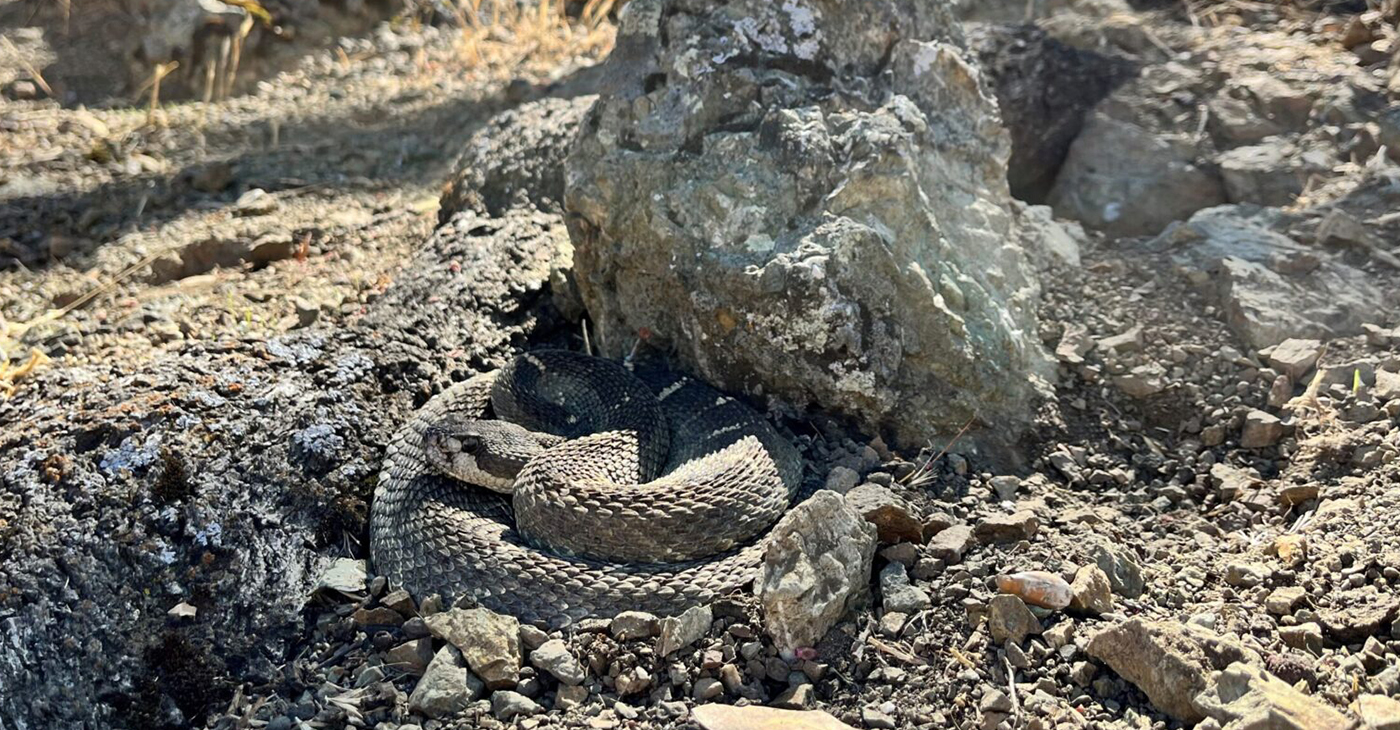
The Richmond Standard
The East Bay Regional Park District released an advisory today on rattlesnakes, which emerge from winter hibernation in early spring and become more active.
Warm weather can bring more potential for rattlesnake encounters with humans and dogs, particularly along trails and roads.
Visitors are encouraged to avoid hiking alone in case of an emergency, to scan the ground ahead as they walk, jog or ride, stay on trails avoiding tall grass, and to look carefully around and under logs and rocks before sitting down. Keep your dog on your leash to be extra safe, park officials said.
If you encounter a rattlesnake, leave it alone – it is unlawful to capture or harm one. Move carefully and slowly away or around it and give it plenty of space, park officials said.
Those who are bitten by a rattlesnake are instructed to stay calm by lying down with the affected limb lower than the heart, then having someone call 911.
Getting medical attention is critical.
Those bitten should not use tourniquets, “sucking,” or snake bite kits. If you are by yourself, walk calmly to the nearest source of help to dial 911, do not run.
If bitten by any other type of snake, wash the wound with soap and water or an antiseptic and seek medical attention.
Not sure what bit you? Check the bite for two puncture marks (in rare cases one) associated with intense, burning pain, which is typical of a rattlesnake bite. Other snakebites can leave marks without associated burning pain.
The Northern Pacific rattlesnake is the species found in East Bay Regional Parks. Snakes are important to the natural environment, helping to control rodents and other reptile populations. But enjoy them from afar.
For more information, download the Park District’s Common Snakes brochure or watch our Gopher Snake or Rattlesnake video to learn how to tell the difference between rattlesnakes and gopher snakes. Additional information is available at ebparks.org/safety/wildlife-encounters.
-

 Community3 weeks ago
Community3 weeks agoFinancial Assistance Bill for Descendants of Enslaved Persons to Help Them Purchase, Own, or Maintain a Home
-

 Business3 weeks ago
Business3 weeks agoV.P. Kamala Harris: Americans With Criminal Records Will Soon Be Eligible for SBA Loans
-

 Activism3 weeks ago
Activism3 weeks agoOakland Post: Week of April 10 – 16, 2024
-

 Community3 weeks ago
Community3 weeks agoAG Bonta Says Oakland School Leaders Should Comply with State Laws to Avoid ‘Disparate Harm’ When Closing or Merging Schools
-

 Community2 weeks ago
Community2 weeks agoRichmond Nonprofit Helps Ex-Felons Get Back on Their Feet
-

 Activism1 week ago
Activism1 week agoOakland Post: Week of April 24 – 30, 2024
-

 Community2 weeks ago
Community2 weeks agoOakland WNBA Player to be Inducted Into Hall of Fame
-

 Community2 weeks ago
Community2 weeks agoRPAL to Rename Technology Center for Retired Police Captain Arthur Lee Johnson

